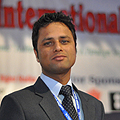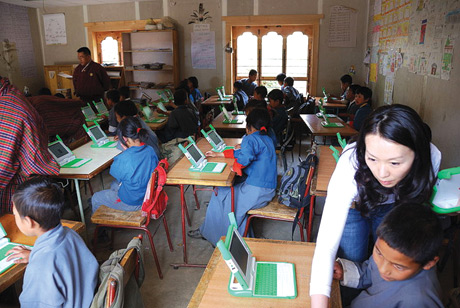
On October 5, we celebrated World Teachers’ Day with the theme “Invest in the future, invest in teachers!” Since long, it has been observed in the academia that teachers and education policymakers are at loggerheads. But it is high time for both to come together and start a discourse in order to confront the issues they are currently dealing with. Teaching has undergone drastic change over the last few years, as the old procedures and methods used in teaching are no more applicable in the new contexts.
This is the digital era of technology. Today the challenge facing the teachers is to bring latest technologies to the classroom. If the teachers, who claim themselves educated, are not able to use technologies and fail to integrate them for pedagogical purpose, they are to be taken as illiterates. Lots of technological tools can be used for educational purpose but lack of competence and knowhow about those tools can make teachers outdated. As children of our times are exposed to latest technologies, teachers must go a step ahead.

Today’s children and adults have diverse learning needs driven by new contexts. Hence, in facilitating their learning needs teachers require skills, knowledge and support. Therefore, investment in teachers is a must as it will have direct bearing on future of children they teach.
Needless to say, deficiency in teachers undermines quality education of a country. According to the UNESCO Institute for Statistics, 1.4 million teachers are missing in classrooms and they are needed to achieve universal primary education (UPE) by 2015. The UNESCO Institute of Statistics (UIS) and the Education for All Global Monitoring Report (EFA GMR) on October 6 jointly released a paper stating that countries will need to recruit more than 4 million more teachers to achieve UPE by the deadline. To replace teachers leaving the profession, 2.6 million would be needed while filling new positions. The remaining 1.6 million is a must as well. There should be no more than 40 pupils per teacher. The paper also claims that at least 27 million teachers should be recruited even if the deadline is extended to 2030.
Another challenge facing us is the lack of qualified and trained teachers. Thus achieving quality education has been a far-fetched dream for many countries.
As the 2015 deadline of Millennium Development Goals (MDG) is nearing it is high time to shape new development agenda for which investment in teachers should be a priority. World Teachers’ Day this year was themed with the same notion.
Realizing the urgency for investing in educators, heads of different UN agencies have issued a joint statement this year. The agency chiefs say that an education system is only as good as its teachers, calling for more rigorous training, better conditions for employment, quality-based teacher recruitment, thoughtful deployment and attracting new teachers and talents, especially young people and women from under-represented communities. “Innovative, inclusive and results-focused teaching is crucial for 2015 and beyond,” the statement reads.
Likewise, Global Thematic Consultation on Education in the Post-2015 Development Agenda states good conditions of employment including appropriate contracts and salaries, prospects for career progression and promotion, good work environment based on creating school contexts that are conducive to teaching, high-quality pre-and in-service training for teachers based on respect for human rights and the principles of inclusive education, and effective management, including teacher recruitment and deployment as essential conditions for supporting teachers’ effectiveness.
Teachers require support in enabling themselves to become professionals through their involvement in various trainings, workshops and conferences, journal writing and research publications. They can also develop professionalism by getting associated with professional forums of teachers, which often organize professional enhancement programs for their members.
Such associations not only help strengthen their professional capacity but also influence policymakers to reform policies for teachers’ welfare. Policymakers need to engage with both teachers and the teachers’ unions to devise policies in their favor for ensuring future of children and learners.
The author, one of Choutari editors, is communication coordinator at college, & also with Republica
Dear Praveen ji:
The article about teachers and the need to be tech-savvy resonates well with the growing netizenry of learners and educators.
One compliment I can give to this article of yours will be to incorporate MOOCs and social media in my Testprep classes. I am quite hopeful that it will be well-received by the students.